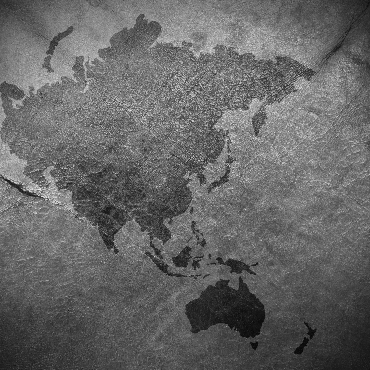AUSTRALIA'S MARITIME VULNERABILITIES
In recent years, China's navy has been growing steadily, both in size and in capabilities. As it has, Chinese naval deployments to the Indian and Pacific Oceans have accelerated. Even so, when Chinese warships were spotted off the east coast of Australia earlier this year, alarm bells rang in Canberra. China now has over 400 operational vessels, giving it the largest fleet in the world – far eclipsing the 16-ship Royal Australian Navy. Adding to Australia's problems, its maritime capabilities are decaying; of its sixteen vessels in service, six are submarines aged between 22-29, seven are Anzac-class frigates that are from 19 to 27 years old, and the last three are newer but underpowered Hobart-class destroyers.
China's growing naval presence in the region highlights Australia's vulnerabilities in other ways as well. The island nation conducts 99% of its trade via shipping, and 99% of its data is provided via undersea cables. Australia also heavily relies on shipping for the country's fuel, fertilizer, ammunition, and pharmaceuticals. Currently, however, Canberra lacks a dedicated coast guard for policing its maritime boundaries, and relies on its navy for that function. (RealClearDefense, February 26, 2025)
NEW PORT PUTS CAMBODIA ON THE MAP
In a move designed to calm increasing suspicions over its PRC ties, Phnom Penh is set to host Japanese navy ships as the first foreign warships at the expansion of its Ream Naval Base. The base, which is set to be inaugurated in early April, will be able to accommodate much larger warships and features a dry dock for repairs. Ream is strategically located in the Gulf of Thailand, adjacent to the South China Sea, an area over which China has made sweeping territorial claims.
The base has raised eyebrows in recent years. First, in 2019, the Wall Street Journal reported on a draft deal that would grant China a 30 year-use of the port – a development Phnom Penh has denied. Later, in 2022, the port began an expansion project with the aid of Chinese backing, again drawing suspicions about expanding Chinese involvement. And last year, Chinese ships were spotted docked at the base for five months, causing concerns in Washington. The most recent move thus "would appear to be a conscious demonstration by Cambodia, that Ream is not exclusively for" China's military, says Euan Graham, a senior defense analyst at the Australian Strategic Policy Institute. (Associated Press, March 18, 2025)
CRYPTO: HOW NORTH KOREA HAS SURVIVED
The regime of Kim Jong Un in North Korea now boasts the distinction of possessing the world's third-largest reserve of Bitcoin – a product of the Hermit Kingdom's illicit activity in cyberspace. According to Deutsche Welle, North Korean hackers have succeeded in stealing billions of dollars in cryptocurrency in recent years. Recently, hackers affiliated with cybertheft ring the Lazarous Group were identified as pilfering $1.5 billion in digital currency from Dubai-based crypto exchange ByBit. Another exchange, Binance News, has reported that the DPRK has made off with Bitcoins worth more than $1.1 billion.
This illicit activity, experts say, has been nothing short of a lifeline for the North Korean regime. "It is probably fair to say that given the way the world was cracking down on Pyongyang's smuggling efforts, crypto has saved the regime," says Park Jung-won, a professor of law at Dankook University. "Without it, they would have been completely without funds. They know that and they have invested heavily in training the best hackers and getting them up to a very high level of skill. The money that they are stealing is going straight to the government and the assumption is that it is being spent on weapons and greater military technology as well as the Kim family." (Deutsche Welle, April 7, 2025)
FEAR AND LOATHING IN TOKYO
Worries about China and an increasingly volatile regional security environment are prompting Japan to ramp up its rapid response capabilities. In recent days, the Japanese Self-Defense Force launched a new maritime transport unit designed to improve the country's ability to deploy troops to its southwestern islands. The unit is said to consist of some 100 personnel drawn from the country's ground forces. The new group "will enable faster and more reliable deployment to the southwestern region and other areas," and do so at a larger scale, Japanese Defense Minister Gen Nakatani has said. (USNI News, April 7, 2025)
Want these sent to your inbox?
Subscribe

